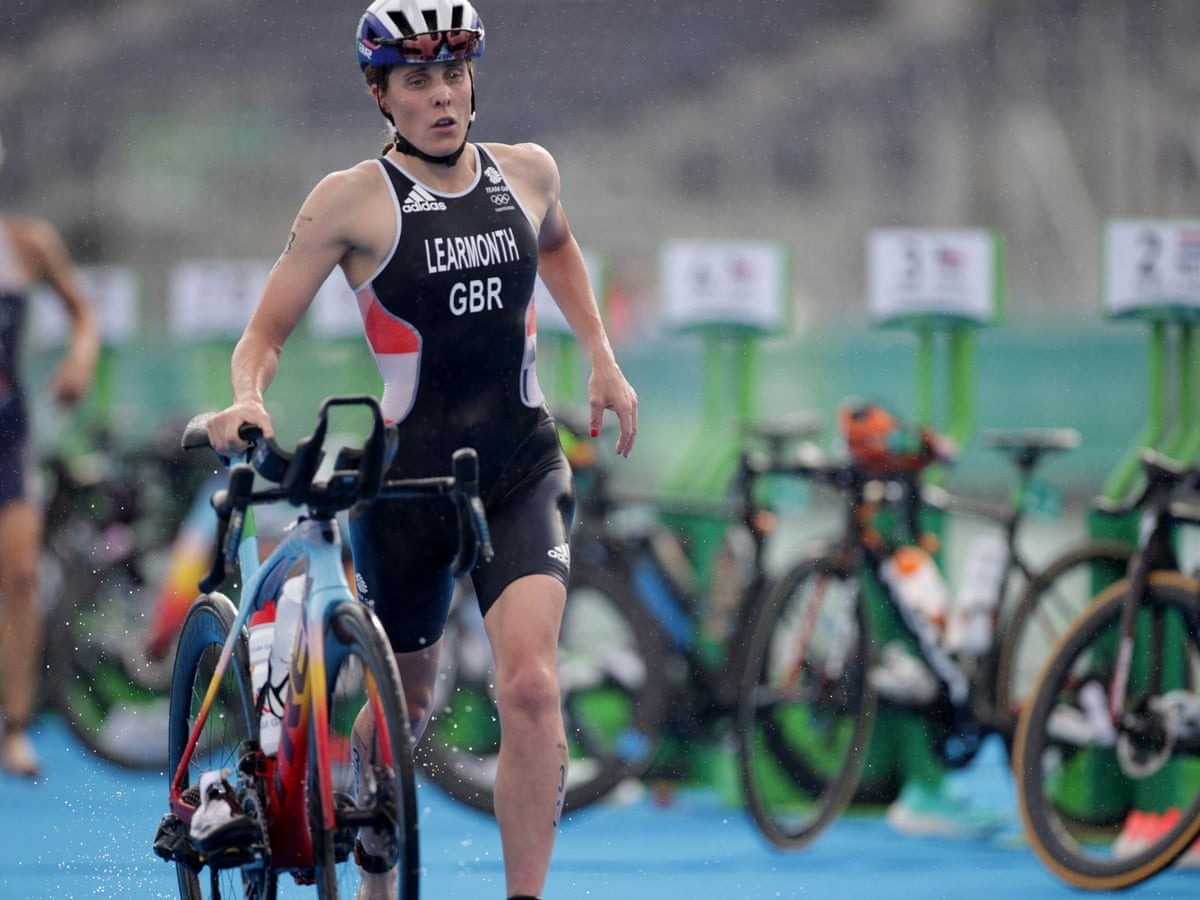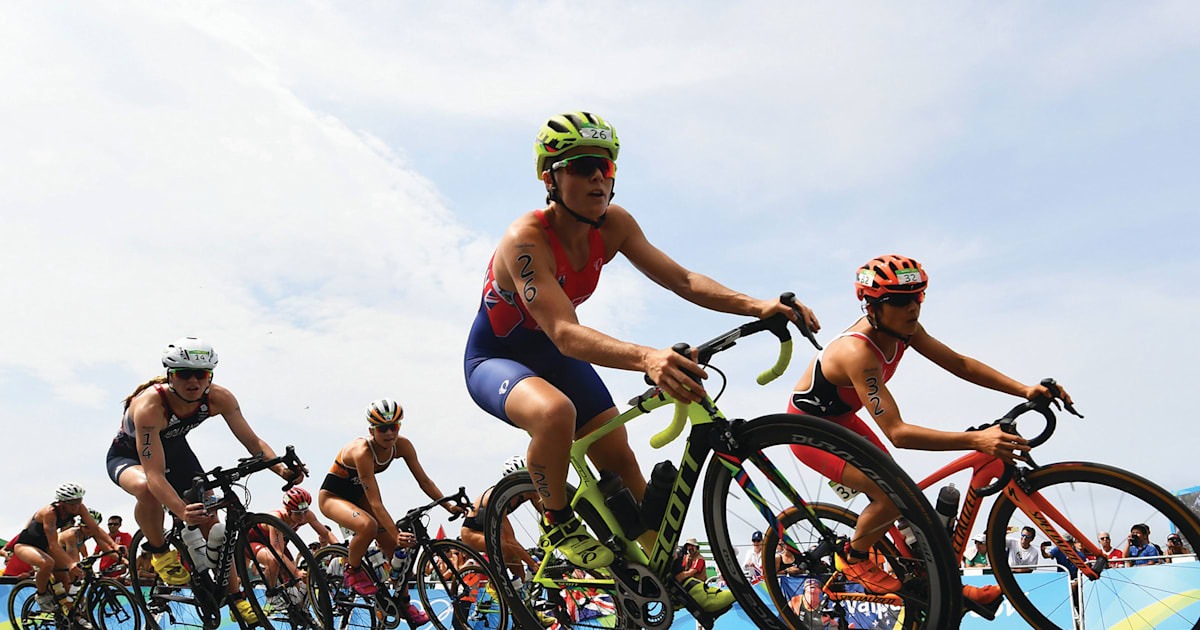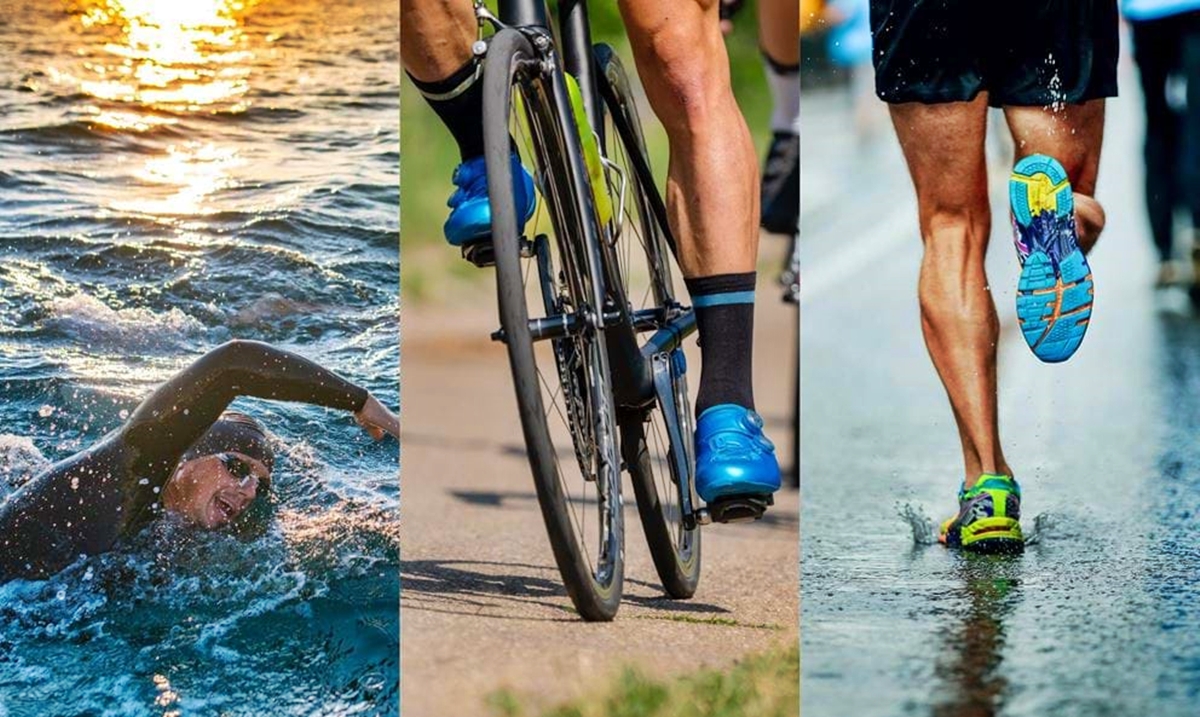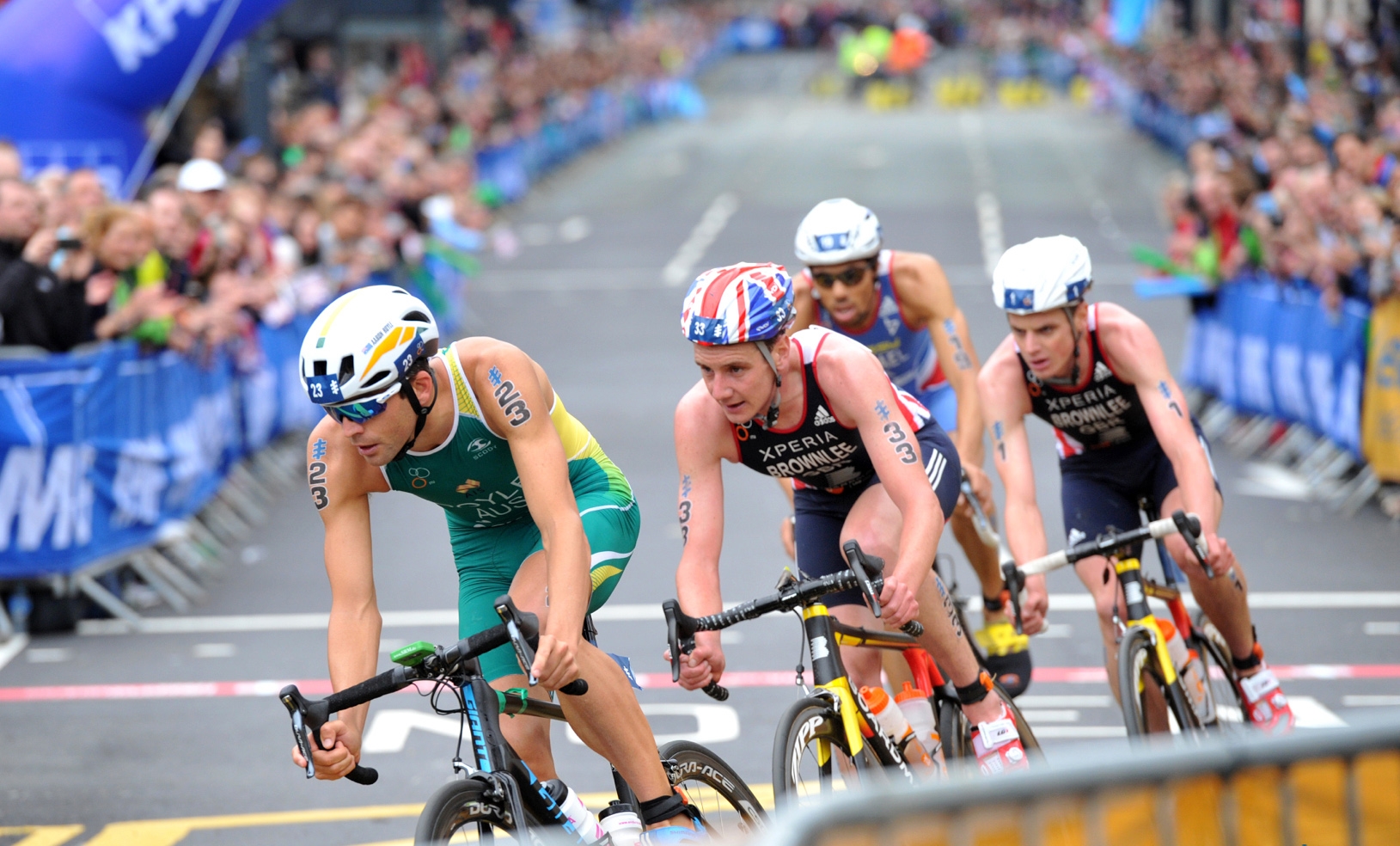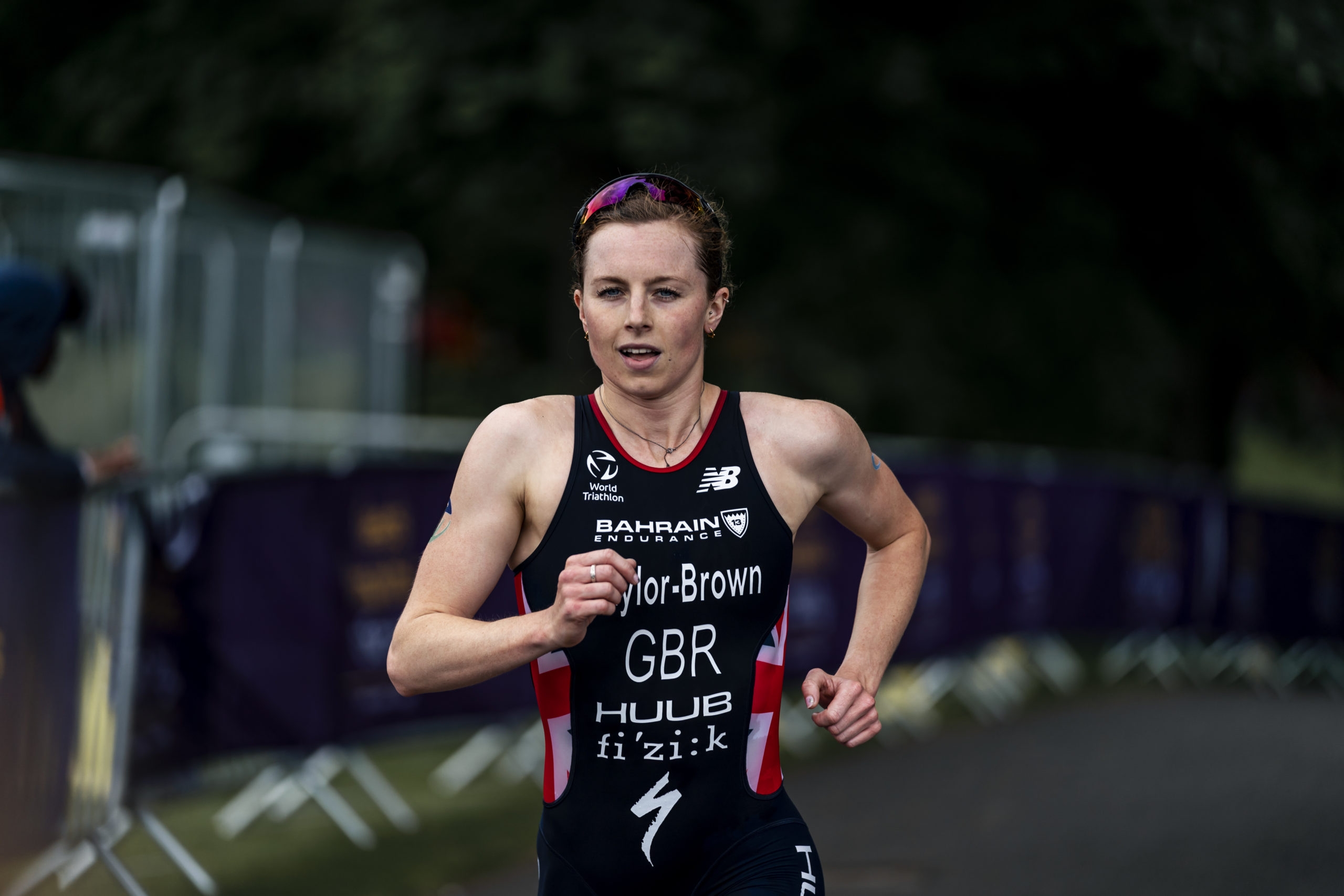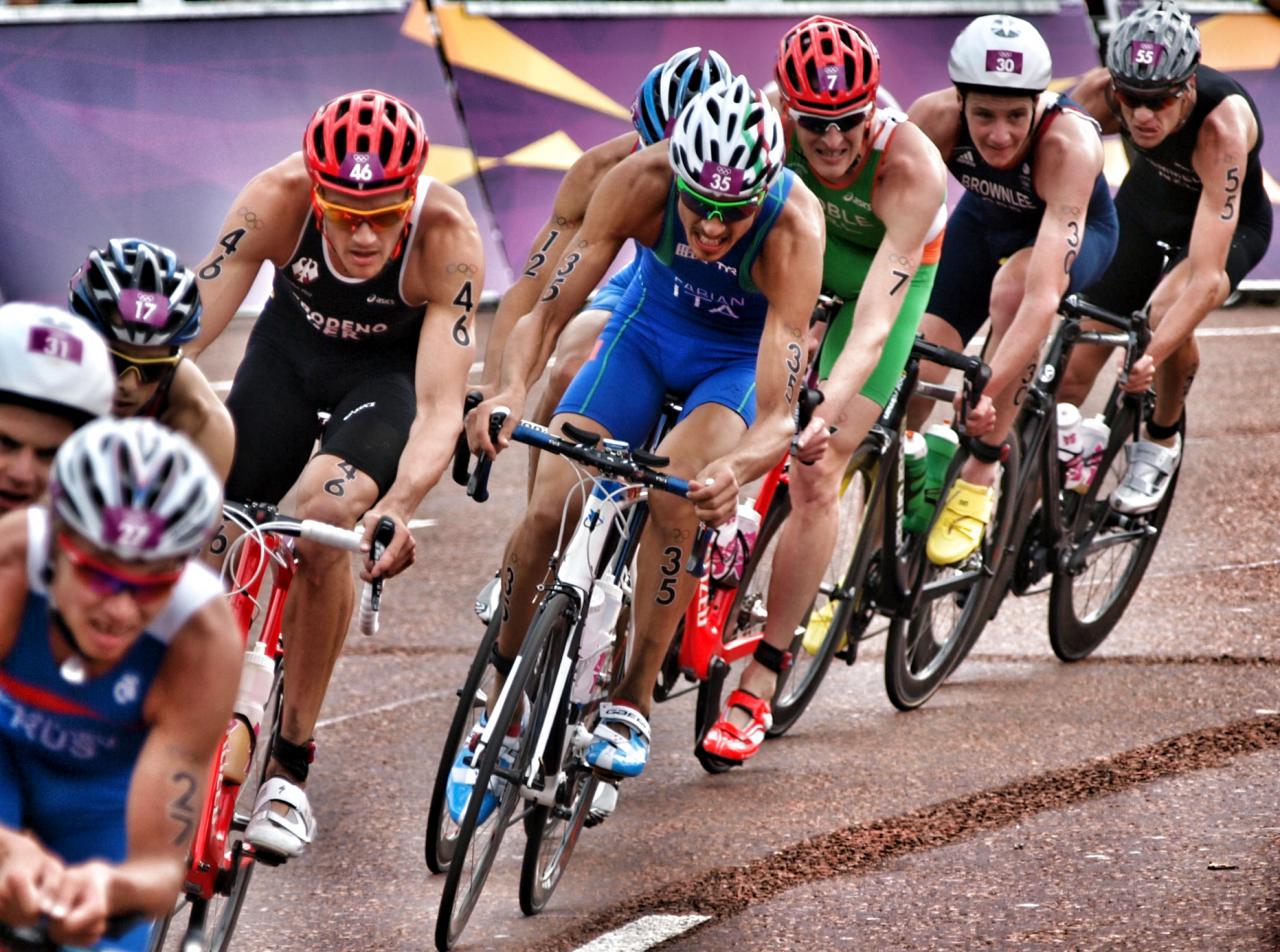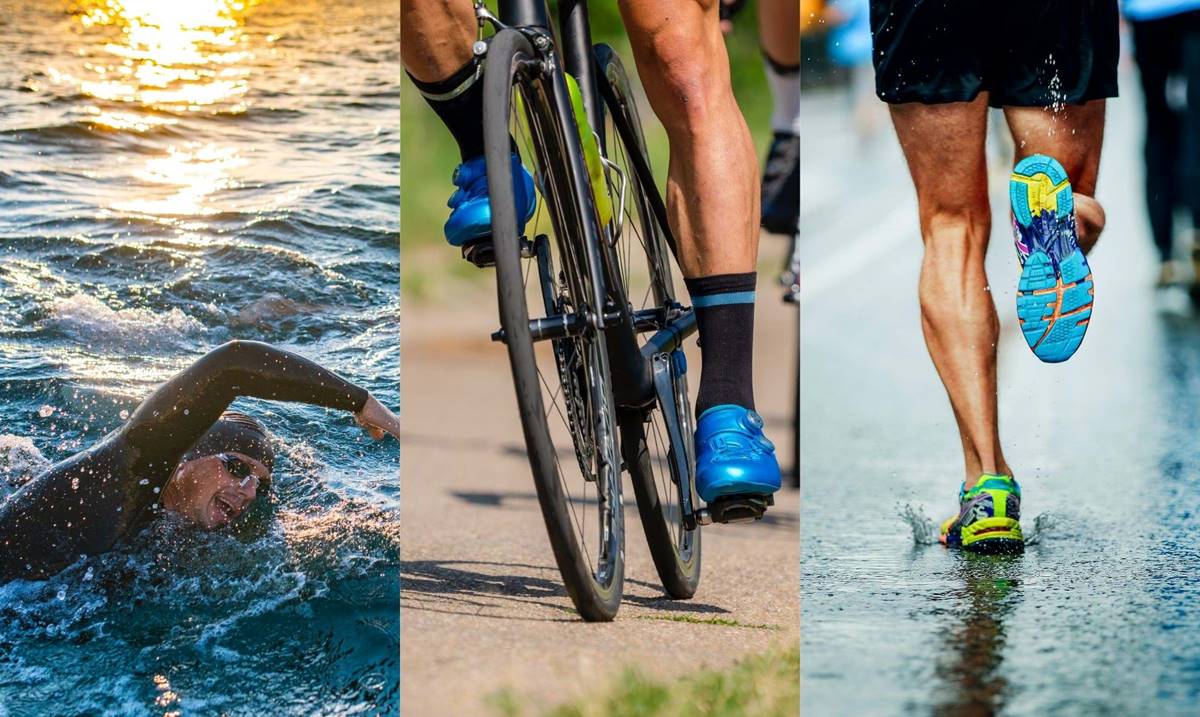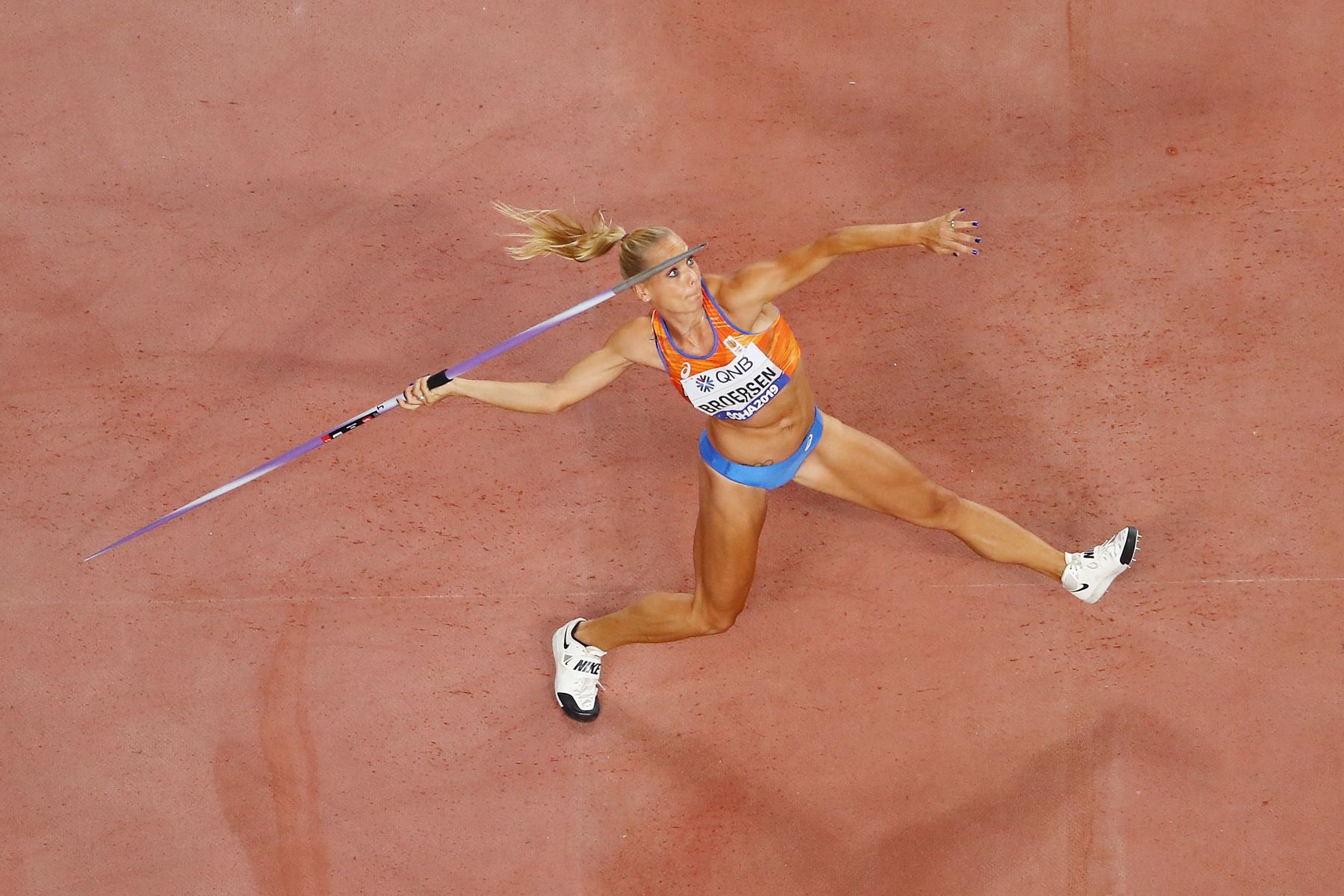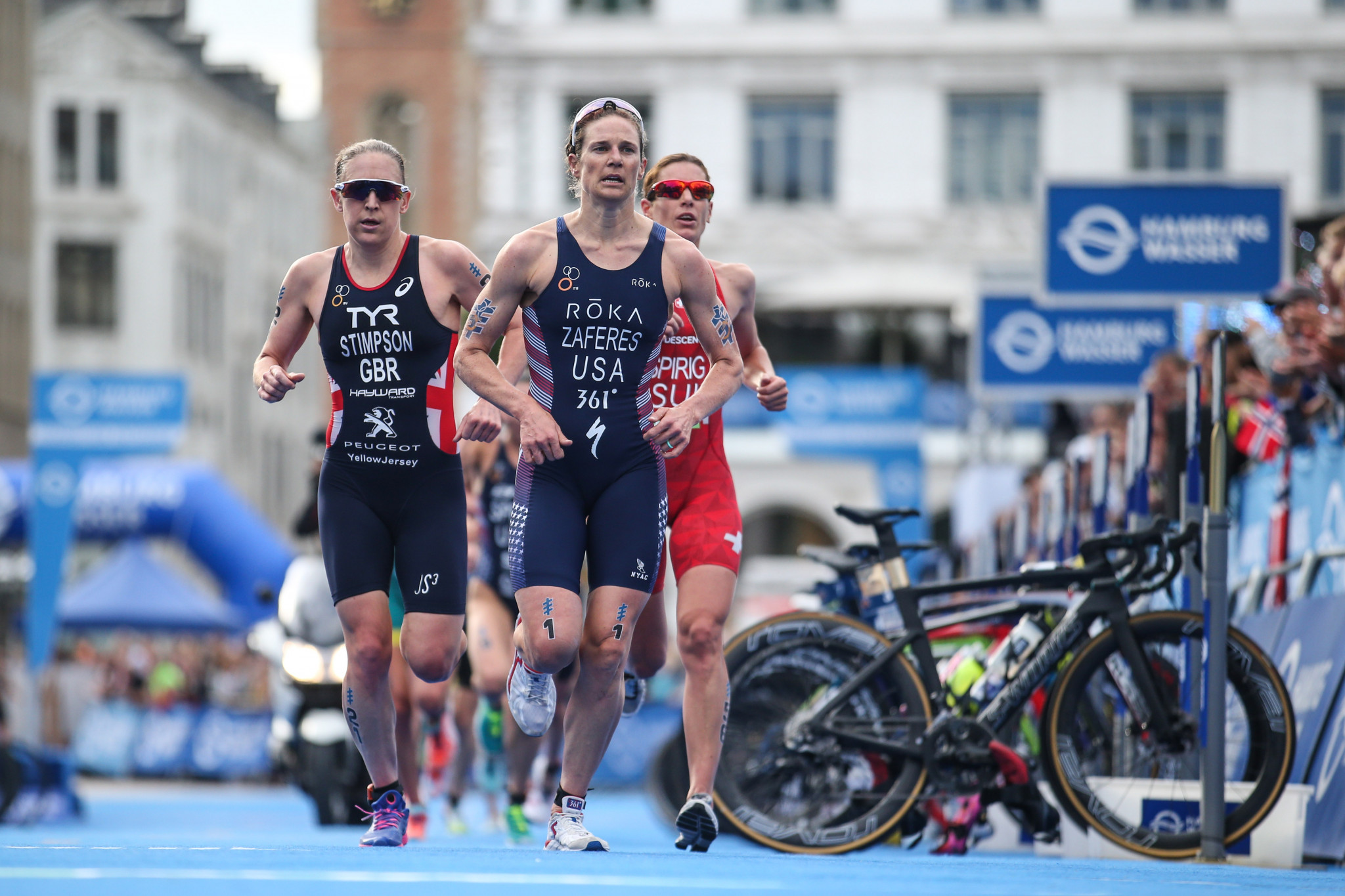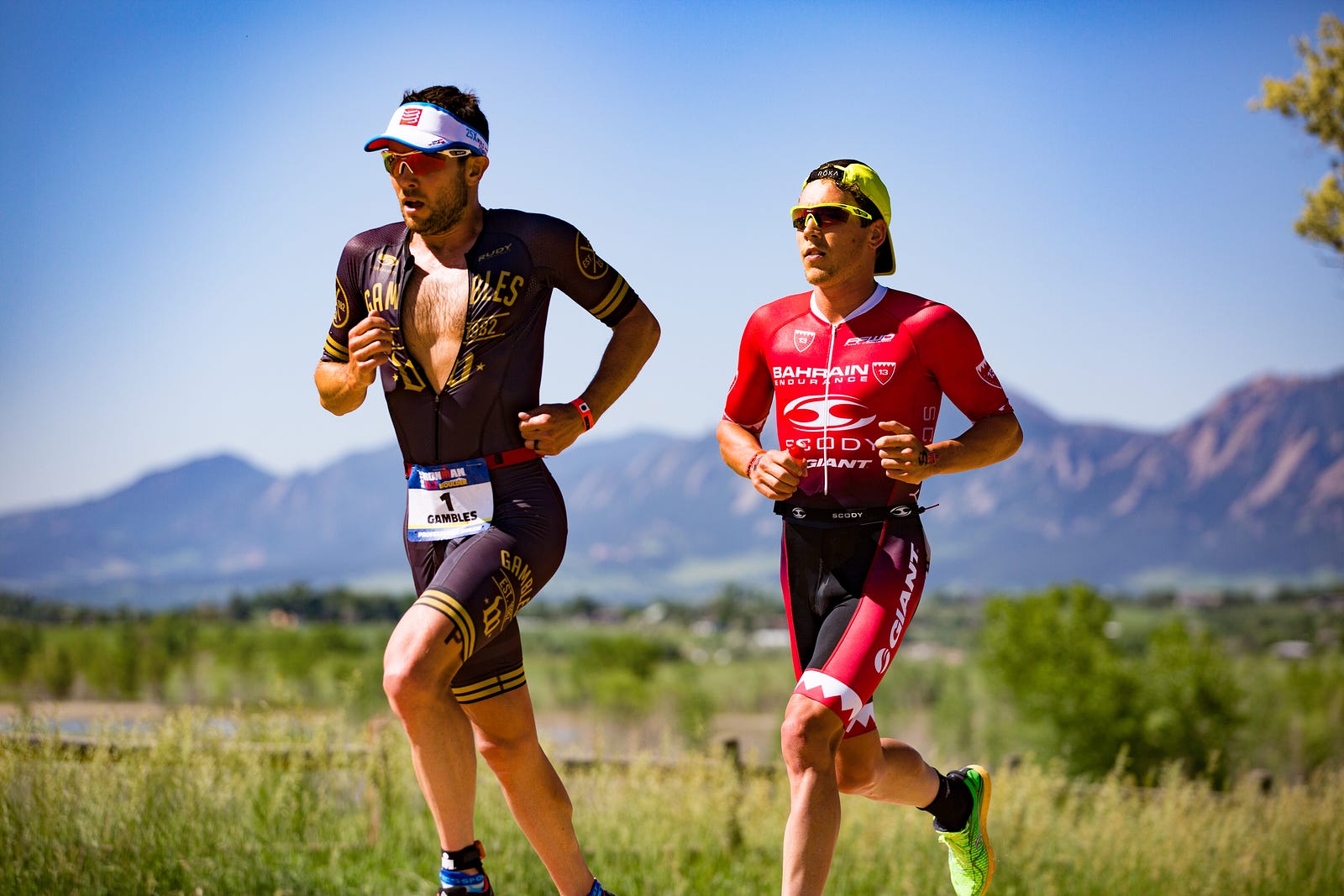

Featured
How Much Taper For Olympic Triathlon
Modified: March 1, 2024
Discover the featured training plan for how much tapering is needed in preparation for an Olympic triathlon, with expert tips and advice to optimize your performance.
Introduction
Preparing for an Olympic triathlon requires months of dedicated training, discipline, and perseverance. From swimming, cycling, to running, athletes push their bodies to the limit in order to achieve peak performance on race day. However, as the event approaches, it becomes crucial for athletes to understand the importance of tapering.
Tapering is a strategic phase of training that involves reducing the intensity and volume of workouts in the weeks leading up to the race. This period allows the body to recover from strenuous training, repair muscle damage, and restore energy levels. While some athletes may see tapering as a time to take it easy, it is actually a critical component in optimizing performance and maximizing race-day potential.
During the tapering phase, athletes see improvements in their muscle strength and power output. Additionally, this period enables the body to adapt to the training stressors and enhances recovery mechanisms. Tapering is also essential for reducing the risk of overuse injuries and fatigue that can hinder performance on race day.
However, tapering is not a one-size-fits-all approach. The duration and intensity of tapering should be individualized based on various factors, including an athlete’s training history, fitness level, and race goals. It’s important to find the right balance between reducing training volume while maintaining intensity, to ensure peak performance on race day.
In this article, we will delve deeper into the concept of tapering for Olympic triathlons. We will explore the factors to consider when designing a tapering plan, the correct duration of tapering, and how to effectively adjust training volume and intensity. We will also discuss nutritional considerations and pre-race preparation during the tapering phase. By understanding these elements, athletes can optimize their performance and arrive at the start line feeling fresh, energized, and ready to tackle the challenges of an Olympic triathlon.
What is Tapering?
Tapering is a period of reduced training intensity and volume that occurs in the weeks leading up to a race. It is a strategic approach that allows the body to recover from intense training, repair damaged tissues, and optimize performance. The tapering phase is an essential component of any training program, and understanding its purpose and benefits is crucial for triathletes preparing for an Olympic triathlon.
During a typical training program, athletes go through cycles of progressively increasing training volume and intensity to build their endurance, strength, and speed. However, it’s important to recognize that training at high intensity for an extended period of time can lead to fatigue, overuse injuries, and a decline in performance. This is where tapering comes into play.
Tapering allows the body to adapt to the training stress and reach its peak performance potential. By reducing the training load, athletes give their muscles and connective tissues time to recover and repair. This process also replenishes glycogen stores in the muscles, which helps increase energy levels and endurance capacity.
In addition to physiological benefits, tapering also has psychological advantages. After months of long and intense training sessions, athletes may experience mental fatigue and burnout. Tapering provides a much-needed mental break, allowing athletes to recharge, refocus, and approach the race with a fresh mindset.
It’s important to note that tapering does not mean complete rest or inactivity. While the training volume and intensity are reduced, athletes still engage in regular workouts but at a lower intensity. This helps maintain muscle memory, neuromuscular coordination, and cardiovascular fitness without risking overexertion.
The duration of tapering varies from athlete to athlete and depends on several factors, including the length of the race, the athlete’s training history, and their individual response to tapering. Typically, a taper period of two to three weeks is recommended for Olympic triathlons. However, this can be adjusted based on individual needs and preferences.
Overall, tapering is an integral part of the training process for Olympic triathletes. It allows the body to recover, repair, and recharge in preparation for the race. By implementing a well-structured tapering program, athletes can optimize their performance, reduce the risk of injuries, and arrive on race day feeling strong, fresh, and ready to give their best effort.
The Importance of Tapering for Olympic Triathlons
Tapering is a crucial phase in the training regimen of Olympic triathletes. It plays a significant role in optimizing performance and ensuring that athletes are at their peak physical and mental condition on race day. Let’s explore the importance of tapering in more detail.
1. Recovery and Repair: Tapering allows the body to recover from the strenuous training leading up to the race. It provides an opportunity for muscles, connective tissues, and energy stores to replenish and repair. This recovery period is essential for avoiding overuse injuries and enhancing overall athletic performance.
2. Adaptation to Training Stress: During the tapering phase, the body adapts and responds to the accumulated training stress. It allows for optimal neuromuscular coordination, strengthening of the cardiovascular system, and improvement in aerobic and anaerobic capacity. These adaptations are crucial for enhancing endurance and performance in the Olympic triathlon event.
3. Energy Restoration: Tapering helps replenish glycogen stores in the muscles, which are essential for fueling energy-demanding endurance activities. With adequate energy levels, athletes can sustain high-intensity efforts for extended durations during the race. Additionally, tapering prevents overtraining and ensures that energy resources are conserved and utilized efficiently.
4. Mental Rejuvenation: Training for an Olympic triathlon can be mentally demanding. Tapering provides athletes with a chance to recharge and rejuvenate mentally. It helps alleviate mental fatigue and burnout, allowing athletes to approach the race with renewed focus, motivation, and confidence.
5. Performance Optimization: The primary goal of tapering is to optimize performance on race day. By reducing training volume and intensity, athletes allow their bodies to fully recover, which leads to improved muscle strength, power output, and endurance. The tapering phase ensures that athletes arrive at the start line feeling fresh, energized, and ready to perform at their best.
6. Injury Prevention: Overuse injuries can be a common occurrence in endurance sports like triathlon. Tapering helps reduce the risk of such injuries by allowing the body to repair damaged tissues and restore strength. It also minimizes the likelihood of muscular imbalances and decreases the strain on the musculoskeletal system, thus preventing potential injuries before the race.
Overall, tapering is vital for Olympic triathletes to optimize their performance, enhance recovery, prevent injuries, and ensure mental readiness for the race. It is a carefully planned and individualized phase that provides athletes with the physical and mental capacity needed to tackle the challenges of an Olympic triathlon event.
Factors to Consider for Tapering
When it comes to designing an effective tapering plan for Olympic triathlons, several factors need to be taken into consideration. Each athlete is unique, and understanding these factors will help in tailoring the tapering phase to meet individual needs. Let’s explore the key factors to consider for tapering:
1. Training History and Fitness Level: An athlete’s training history and current fitness level play a vital role in determining the tapering strategy. Athletes with a rich training base and higher fitness levels may require a shorter tapering period compared to those who are relatively new to the sport or have lower fitness levels.
2. Race Goals: The specific goals an athlete has for the race will also influence the tapering plan. If the goal is to achieve a personal best time or secure a top placement, a more aggressive tapering approach may be warranted. On the other hand, if the goal is to finish the race comfortably or simply enjoy the experience, a less intense tapering plan may be suitable.
3. Individual Response to Tapering: Each athlete responds differently to tapering. Some athletes thrive with a higher training volume close to the race, while others may benefit from a more significant reduction in volume. It’s important to consider how an athlete’s body responds to various tapering strategies and tailor the plan accordingly.
4. Race Distance: The distance of the Olympic triathlon event should also be considered when designing the tapering plan. Sprint and shorter distances may require a shorter tapering period compared to longer distances, as the recovery demands and physiological impact vary.
5. Chronological Age: Another factor to consider is the athlete’s chronological age. Older athletes may require a longer tapering period to allow for sufficient recovery and reduce the risk of injury.
6. Mental Readiness: Tapering is not just about physical recovery; it’s also important to consider mental readiness. Athletes may need time to reduce stress levels, mentally prepare for the race, and ensure they are in a positive and focused mindset on race day.
7. Trial and Error: Tapering plans may require some trial and error. It’s important to experiment with different tapering strategies during training cycles to understand what works best for individual athletes. Learning from past tapering experiences can help fine-tune the plan for future races.
Remember, tapering should not be a static process. It is a dynamic phase that may need adjustments based on individual responses, external factors, and ongoing monitoring of performance and recovery. By carefully considering these factors and customizing the tapering plan, athletes can optimize their readiness and perform their best on race day.
Determining the Taper Duration
The duration of the tapering phase is a critical aspect of preparing for an Olympic triathlon. The length of the taper will vary depending on several factors, such as the athlete’s training history, fitness level, and race goals. Finding the optimal taper duration is essential to ensure proper recovery and performance enhancement. Let’s delve into the factors that influence the determination of taper duration:
1. Training Volume and Intensity: The overall training volume and intensity leading up to the taper phase should be taken into account. Athletes who have accumulated higher training loads may require a longer taper period to adequately recover and restore their energy levels.
2. Race Distance: The length of the Olympic triathlon event will also influence the duration of the taper. Generally, longer race distances, such as Olympic or Ironman triathlons, will require a more extended tapering period compared to shorter distances, like Sprint or Super Sprint. The physiological demands and recovery needs differ for each race distance.
3. Individual Response to Tapering: Each athlete responds differently to tapering. Some may benefit from a shorter taper duration, while others may require more time to fully recover and perform at their best. Monitoring and observing an athlete’s response to tapering in previous training cycles can help determine the ideal duration for future races.
4. Fitness Level and Training History: Athletes with a solid training background and higher fitness levels may require a shorter taper period, as their bodies are accustomed to handling higher training loads. On the other hand, athletes who are relatively new to the sport or have lower fitness levels may need a longer tapering phase to allow for sufficient recovery and adaptation.
5. Chronological Age: Age can impact an athlete’s recovery ability and injury risk. Older athletes may require a longer taper duration to accommodate for slower recovery rates and reduce the risk of overuse injuries. It is crucial to consider the individual’s age and make appropriate adjustments to the tapering plan.
6. Competitive Schedule: An athlete’s competitive schedule and the proximity of other races should also be considered when determining the taper duration. If an athlete has recently competed in another significant event or has upcoming races shortly after the target triathlon, the taper may need to be adjusted to allow for sufficient recovery and preparation.
Ultimately, the optimal taper duration is a balance between giving the body enough time to recover and adapt, while ensuring that fitness gains are not compromised. Tapering plans should be individualized, and athletes should experiment with different taper durations in training cycles to determine what works best for them. Effective communication with coaches and feedback from previous races can guide the process of fine-tuning the taper duration for optimal performance on race day.
Training Volume Reduction During Taper
One of the key components of tapering for an Olympic triathlon is the reduction in training volume. This reduction allows for recovery, muscle repair, and optimal performance on race day. The specific approach to reducing training volume during the taper phase can vary depending on the athlete and their individual needs. Let’s explore some considerations when it comes to training volume reduction:
1. Decreasing Frequency: One way to reduce training volume is to decrease the frequency of workouts. This entails reducing the number of training sessions per week. For example, if an athlete typically trains six days a week, they might reduce it to three or four sessions per week during the taper.
2. Cutting Back on Distance: Another approach is to gradually reduce the distance covered in each discipline of the triathlon. This involves decreasing the total mileage or duration for swim, bike, and run workouts. The reduction can vary depending on the athlete’s training history, race distance, and individual response to tapering.
3. Lowering Intensity: While the taper phase involves reducing training volume, it is important to maintain the intensity of workouts. This means that the athlete should continue to perform high-intensity intervals, speed work, and race-pace efforts. However, the overall volume of these high-intensity sessions may also be reduced, allowing for adequate recovery.
4. Balancing the Disciplines: It is important to maintain a balance between the swim, bike, and run disciplines during the taper. Athletes should avoid putting excessive emphasis on one discipline while neglecting the others. This ensures that all three disciplines are given equal attention and opportunity for recovery.
5. Rest Days: Incorporating rest days into the taper phase is crucial for recovery and reducing training volume. Rest days allow the body to repair, adapt, and conserve energy for the upcoming race. Athletes can use this time to focus on other recovery modalities such as stretching, foam rolling, or light cross-training activities.
6. List-Based Training: Some athletes find it beneficial to have a specific training plan outlined during the taper phase. This can be in the form of a list-based training schedule, where athletes can check off completed workouts and monitor their progress. This approach provides structure and motivation while ensuring that the training volume reduction is gradual and intentional.
It’s important to note that training volume reduction should be individualized and based on the athlete’s fitness level, training history, and taper goals. Communication with a coach or a qualified training professional can help tailor the taper plan to meet specific needs and ensure a smooth transition from intense training to race readiness.
Maintaining Intensity During Taper
While tapering involves reducing training volume, it is important to maintain intensity in workouts to ensure optimal performance on race day. The taper phase is not a time for complete rest or inactivity; rather, it is an opportunity to fine-tune and sharpen your skills. Here are some key considerations for maintaining intensity during the taper:
1. Maintain High-Intensity Intervals: Intervals are an effective way to maintain and enhance your speed and race-specific fitness. During the taper, continue to include high-intensity intervals in your workouts to stimulate the body’s physiological systems and maintain your race pace. These intervals can be shorter in duration compared to your regular workouts, but they should still challenge your body and mimic the demands of the race.
2. Shorter Workouts with Higher Intensity: Instead of long, endurance-focused sessions, incorporate shorter workouts with higher intensity during the taper. This allows you to maintain your fitness level while reducing overall training volume. For example, you can do shorter, intense runs or bike rides with intervals or tempo efforts to keep your body engaged and ready for race intensity.
3. Practice Transitions: Transitions are a crucial aspect of triathlon performance. During the taper phase, use your workouts to practice transitions between swim to bike and bike to run. Incorporate brick workouts, where you combine two disciplines together with minimal rest, to maintain a smooth transition between segments. These sessions will help you refine your skills, adapt to the physical demands of transitioning, and improve your overall race performance.
4. Focus on Technique and Form: With reduced training volume, you have the opportunity to dedicate more time to perfecting your technique and focusing on proper form. Pay attention to your swim stroke, cycling cadence, and running posture. Use drills and specific exercises to enhance your efficiency and economy in each discipline. Improved technique will not only help you conserve energy during the race but also enhance your performance.
5. Monitor Rest and Recovery: While maintaining intensity during taper is crucial, it’s equally important to prioritize rest and recovery. Make sure to include adequate rest days in your taper plan to allow your body to recover and adapt to the training stress. This will ensure that you are able to maintain the intensity when needed while minimizing the risk of overtraining or fatigue.
6. Listen to Your Body: Pay close attention to your body during the taper phase. If you feel unusually fatigued or experience any signs of overtraining, it may be necessary to modify your training intensity accordingly. Remember that tapering is about finding the balance between maintaining intensity and allowing your body to recover, so listen to your body’s signals and make adjustments as needed.
Remember, the goal of maintaining intensity during the taper is not to push yourself to the limits but rather to stay engaged, prepared, and mentally sharp for the race. By incorporating high-intensity intervals, transitions, and focusing on technique, you can make the most of your taper phase and showcase your best performance on race day.
Nutritional Considerations During Taper
Proper nutrition plays a critical role in optimizing performance during the taper phase of training for an Olympic triathlon. As training volume decreases and the body focuses on recovery and preparation for the race, it is important to prioritize fueling strategies and ensure that nutritional needs are met. Here are some key nutritional considerations to keep in mind during the taper:
1. Maintain a Balanced Diet: Even though training volume is reduced, it is crucial to maintain a well-balanced diet that includes carbohydrates, proteins, and healthy fats. Carbohydrates provide the necessary energy for training and recovery, while proteins aid in muscle repair and growth. Healthy fats, such as avocados and nuts, are essential for hormonal balance and overall health.
2. Optimize Carbohydrate Intake: While the training load is reduced, it is important to reduce carbohydrate consumption slightly to match the decreased energy expenditure. However, it is still necessary to consume adequate carbohydrates to replenish glycogen stores and maintain energy levels for workouts and race preparation.
3. Prioritize Recovery Nutrition: Recovery nutrition becomes even more crucial during the taper phase. You should focus on consuming protein and carbohydrates immediately after workouts to facilitate muscle repair and glycogen replenishment. Including sources of high-quality protein, such as lean meats, beans, or dairy products, and carbohydrates like fruits, whole grains, and vegetables can aid in the recovery process.
4. Hydration: Pay close attention to your hydration levels during the taper phase. Even though training volume is reduced, proper hydration is still essential for overall health, recovery, and optimal performance. Aim to drink enough fluids throughout the day and consider electrolyte replacement beverages during workouts to replenish lost electrolytes.
5. Micronutrient-Rich Foods: Include plenty of nutrient-dense foods to ensure you are getting essential vitamins and minerals. Fruits, vegetables, nuts, and seeds are excellent sources of micronutrients that support immune function, muscle recovery, and overall health. These foods also provide antioxidants that help reduce inflammation and support the body’s recovery processes.
6. Avoid Overeating or Undereating: It is important to listen to your body’s hunger and fullness cues during the taper. Some athletes may find that their appetite decreases due to a decrease in training volume. Still, it’s important to ensure you are consuming enough calories to support your body’s needs. On the other hand, avoid overeating, as excessive calorie intake can lead to weight gain and potentially affect performance.
7. Practice Race-Day Nutrition: The taper phase provides an ideal opportunity to fine-tune your race-day nutrition strategy. Experiment with different pre-race meals, hydration strategies, and fueling options during workouts to determine what works best for your body. This will help you establish a routine and ensure that you are prepared for optimal performance on race day.
Remember, nutrition is a key component of your overall training plan. Paying attention to your diet during the taper phase will support your body’s recovery, help maintain optimal energy levels, and ensure you are race-ready.
Pre-Race Preparation During Taper
The taper phase is a critical time for pre-race preparation in an Olympic triathlon. While the training volume decreases, there are several important aspects to consider to ensure you are fully prepared for race day. Here are key pre-race preparations to focus on during the taper:
1. Mental Preparation: Use the taper phase to mentally prepare for the race. Visualize yourself successfully completing each leg of the triathlon, going through transitions smoothly, and crossing the finish line. Practice positive self-talk and cultivate a confident mindset to alleviate pre-race jitters and enhance your mental resilience.
2. Review Race Strategy: Take the time to review your race strategy during the taper phase. Familiarize yourself with the race course, elevation changes, and any specific challenges you may face. Plan your pacing strategy, and determine your target goals for each leg of the race. This will help you stay focused on race day and make informed decisions during the event.
3. Equipment Check: Use the taper period to thoroughly check and organize your race equipment. Ensure your bike is in good working condition, with properly inflated tires and well-lubricated chains. Check your wetsuit (if applicable), goggles, swim cap, helmet, running shoes, and any other gear you will need. Make a checklist and pack your race bag in advance to avoid any last-minute stress or missing items on race day.
4. Transition Practice: Incorporate transition practice sessions during the taper phase. Set up a mock transition area and practice quickly transitioning from one discipline to another. Practice removing and wearing your wetsuit, mounting and dismounting your bike, and changing shoes swiftly. By rehearsing these transitions, you will become more efficient and confident during the race.
5. Sleep and Recovery: Adequate sleep and recovery are crucial during the taper phase. Prioritize getting enough sleep each night to allow for proper rest and recovery. Quality sleep supports muscle repair and regeneration, enhances mental focus, and boosts overall performance. Additionally, incorporate recovery strategies such as foam rolling, stretching, and massage to ensure your body feels refreshed and ready for race day.
6. Race-Day Logistics: Take time during the taper phase to plan and organize race-day logistics. Review the race-day schedule, including check-in times, wave start times, and transition area opening and closing times. Plan your travel arrangements, accommodation, and pre-race meals. By having a well-thought-out race-day plan, you can minimize stress and ensure a smooth and enjoyable experience.
7. Focus on Nutrition and Hydration: Proper nutrition and hydration in the days leading up to the race are critical for energy replenishment and race-day performance. Follow a balanced diet, ensuring sufficient carbohydrates, proteins, and healthy fats. Stay hydrated by drinking plenty of fluids, including water and electrolyte-rich beverages. Avoid trying new foods or supplements that may cause digestive discomfort and stick to familiar, easily digestible choices.
The taper phase is not just about physical recovery; it is a time to fine-tune your mental and logistical preparation. Use this period to focus on mental strategies, review your race plan, ensure equipment readiness, and optimize sleep and recovery. By paying attention to these pre-race preparations, you will arrive at the start line feeling confident, ready, and fully prepared to tackle your Olympic triathlon.
Tapering Mistakes to Avoid
Tapering is a critical phase in the training process for an Olympic triathlon, but it’s important to approach it strategically and avoid common tapering mistakes that can hinder performance on race day. Here are some tapering mistakes to be aware of and avoid:
1. Cutting Taper Too Short: One common mistake is not allowing enough time for a proper taper. Taper duration should be individualized, but generally, a taper period of two to three weeks is recommended for Olympic triathlons. Avoid the temptation to cut the taper short, as it may not allow for adequate recovery and preparation.
2. Maintaining High Training Volume: Tapering involves a reduction in training volume to allow for recovery and adaptation. Avoid the mistake of maintaining high training volume during the taper phase. Failure to reduce training volume can lead to fatigue, overtraining, and a decline in performance on race day.
3. Ignoring Intensity: While reducing training volume, it’s important to maintain intensity in workouts. Some athletes make the mistake of reducing both volume and intensity simultaneously, which can lead to detraining and a decrease in performance. Maintain high-intensity intervals and race-specific efforts during the taper to keep your body primed for race intensity.
4. Neglecting Recovery: Recovery is essential during the taper phase, but some athletes mistakenly overlook its importance. Recovery practices such as proper sleep, nutrition, hydration, and self-care techniques like foam rolling and stretching should be prioritized. Neglecting recovery can hinder the body’s adaptation and preparation for race day.
5. Drastically Changing Diet: Tapering is not the time to experiment with drastic changes to your diet. Avoid the mistake of making sudden, significant changes to your nutrition plan or trying new foods or supplements that your body is not accustomed to. Stick to familiar, nutrient-dense foods that provide the energy and nutrients your body needs for proper recovery and performance.
6. Overlooking Mental Preparation: Tapering is not just about physical recovery; it’s also an opportunity to mentally prepare for the race. Neglecting mental preparation is a common mistake. Set aside time for visualization, positive self-talk, and mental relaxation techniques to build confidence and mental resilience leading up to race day.
7. Neglecting Race-Day Logistics: Proper race-day logistics are crucial for a smooth and stress-free experience. Avoid the mistake of neglecting race-day logistics during the taper phase. Plan and organize your race-day schedule, check-in times, transition areas, and travel arrangements well in advance to minimize pre-race stress and ensure you are fully prepared.
8. Letting Nerves Get the Best of You: Pre-race nerves are common, but allowing nerves to overwhelm you can hinder performance. Avoid the mistake of letting nerves negatively impact your mindset. Stay focused, trust your training, and remind yourself of your preparation and abilities. Use relaxation techniques and positive self-talk to manage nervousness effectively.
Avoiding these tapering mistakes will help ensure that your taper phase is effective in optimizing your performance on race day. By allowing enough time for recovery, maintaining intensity, prioritizing recovery practices, and being mindful of mental and logistical preparation, you’ll set yourself up for success in your Olympic triathlon.
Conclusion
Tapering is a crucial phase in the training journey of Olympic triathletes. It allows the body to recover, repair, and recharge in preparation for the race. By strategically reducing training volume and maintaining intensity, athletes can optimize their performance, reduce the risk of injury, and arrive on race day feeling strong and ready.
Factors such as training history, fitness level, race goals, and individual response to tapering should be considered when determining taper duration. It’s important to find the right balance between giving the body adequate time to recover while ensuring fitness gains are not compromised.
Nutritional considerations during the taper are also critical. Maintaining a balanced diet, optimizing carbohydrate intake, prioritizing recovery nutrition, staying hydrated, and incorporating micronutrient-rich foods all contribute to proper fueling for race day.
Pre-race preparations during the taper phase are essential for success. Mental preparation, reviewing race strategy, equipment checks, transition practice, sleep and recovery, and race-day logistics should all be given careful attention to ensure a smooth and confident performance.
Avoiding common tapering mistakes is another key aspect. Cutting the taper too short, maintaining high training volume, neglecting intensity or recovery, making drastic dietary changes, overlooking mental preparation, neglecting race-day logistics, and letting pre-race nerves take over can all hinder performance on race day.
By understanding the importance of tapering and implementing an effective tapering plan, Olympic triathletes can optimize their performance, reduce the risk of injury, and achieve their race goals. The taper phase is a time for recovery, reflection, and preparation – a time to fine-tune both the body and mind for the exhilarating challenges that lie ahead on race day.
